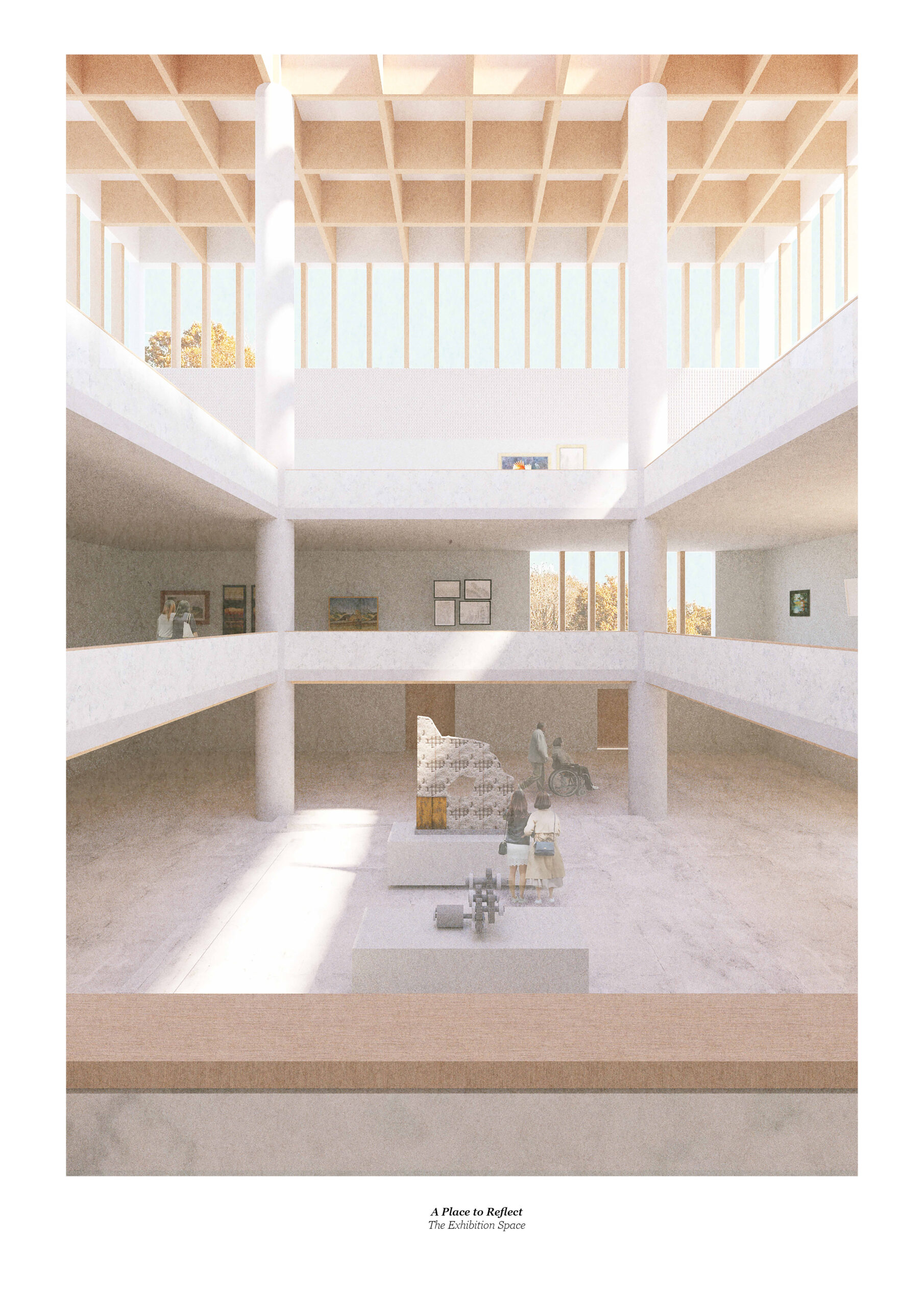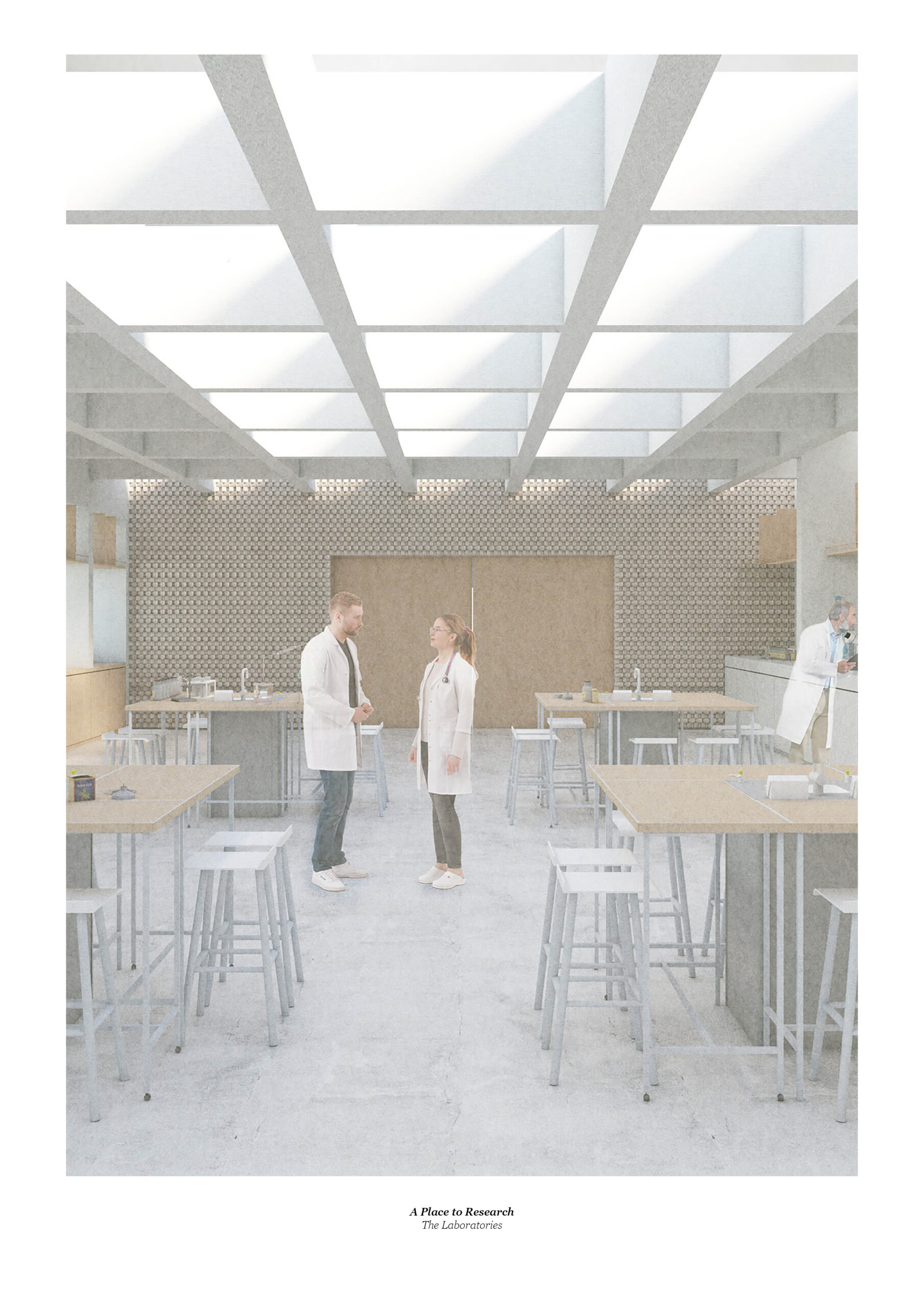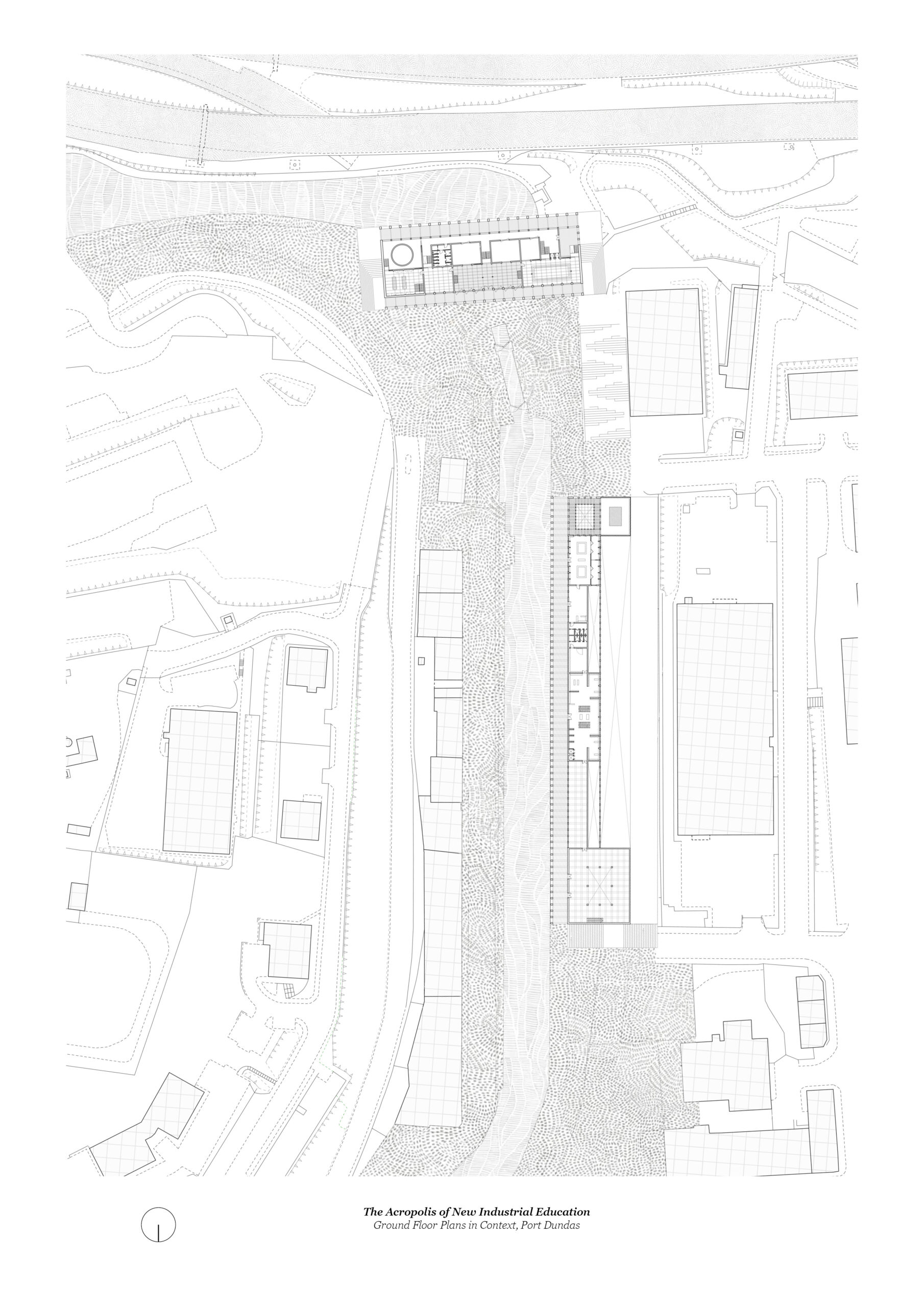This thesis aims to respond to two juxtaposing ideas and interests that are present within the city; former industrial districts, with a now forgotten identity and remaining vacant land, and Glasgow’s current ethical and sustainability ambitions, which are recognised both nationally and internationally. Reflection and research emerged as two key ideas, defining two distinct buildings of education.
Historical analysis and empirical data became the primary methodology, coupled with contemporary research into Scotland’s, and specifically Glasgow’s efforts to tackle the climate crisis. My focus narrowed to Port Dundas, separated from the rest of the city by the M8. It was once a dominant figure at the height of industry; however, little remains of its fundamental role other than a few remnants. It came as no surprise that deprivation intersected with the loss of industry here, and further research uncovered the alarming statistics of low education rates, fuel poverty and derelict land. This topic became important to me, having grown up in the former mining village of Muirkirk in the south-east of Scotland and witnessing first-hand the impacts of the sudden departure of industry had on its people and environment.
Scotland is fast becoming the testbed for new and exciting sustainable energy and technology solutions – some of which are currently taking place in Glasgow, the city which will proudly host COP26. Glasgow is active in its role to tackle the climate crisis, and this realisation became a key element in defining the topics of ethics and sustainability within the thesis. The proposed buildings and linear parks hope to create spaces of reflection, energy production and contemporary research, offering new opportunities for education and renewable energy solutions to power the buildings themselves and wider context of the north of Glasgow.
The Building of Research becomes a place of ‘active’ learning through workshops, laboratories, classrooms, an informal lecture space and functioning water tower. To balance this, the Building of Reflection celebrates industry at varying levels: district, city and nationally. It comprises galleries and exhibition spaces, archives, and libraries – spaces of ‘passive’ learning. The architectural technology thesis is embedded within the research proposal. The linear park will supply ‘Green Heat Energy’ through the use of ground source heat pumps laid underneath the park, re-thinking our vacant land through well-recognised and understood building and technology strategies, while providing a new park typology and enjoyable, multi-functional green spaces within the city.




